Tips and tricks for getting started with Ubisoft's The Division
Beginner's guide

Getting started
Move over Destiny – there's a new huge online open-world shooter in town: The Division. The latest game from Ubisoft – the people behind Assassin's Creed, Far Cry and Watch Dogs – The Division puts players in a post-apocalyptic New York, fighting to survive in a world that's been decimated by a virus.
The Division is a third-person open-world game with an online twist that allows you to fight against – or with – other players while finding and crafting new items and building your character.
The size and scope of The Division is huge, so you might find it a little daunting at first. But fear not: we're here to help you survive, with these great tips and tricks for getting started with The Division.

1. Build your Base of Operations
Sculpting your character is very important in Ubisoft's The Division, but it's also handled differently to other role-playing games. In The Division, after the first few missions you will be introduced to the Base of Operations, which each player can unlock and upgrade as they see fit.
The Base of Operations is divided into three wings: Medical, Tech and Security. Each wing has missions, which give you points that can be used to unlock and upgrade specialised talents. You can also earn supplies, and once you get more than 200 points you can upgrade the wing.
Side missions are also related to each wing, and these can be identified by their colour: green for Medical, yellow for Tech and blue for Security.
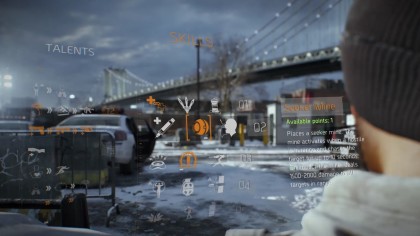
2. Know your skills, talents and perks
The key to mastering The Division is by carefully focusing on the right skills, talents and perks. Skills offer offensive and defensive abilities with various high-tech gadgets, and they can be easily activated by pressing an assigned key or controller button.
You start off with one slot for a skill, but later on you can get a second slot – and each skill can be modified to become even more powerful. Bear in mind that each time you use a skill there will be a cool-down period afterwords while it recharges.
On top of the two 'standard' skills you can acquire, you can also learn a signature skill – which is vastly more powerful. You'll need to save up a lot of points to unlock these, and they have even longer cool-down periods – but the wait is definitely worth it.
While you need to activate skills yourself, talents will automatically boost your character when they're equipped. At first you can only assign one talent, but eventually you'll be able to use four at once. The talents will turn themselves on for limited periods of time depending on your actions.
Perks are also automatic – all you need to do to make use of them is unlock them. These can increase your health, hold more items and affect how quickly you earn XP.
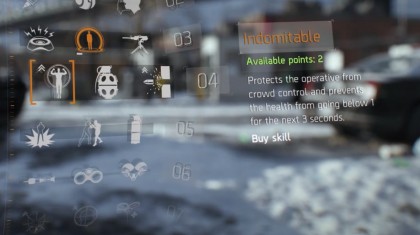
3. Know which stats and attributes to focus on
While your skills, talents and perks will help you create a base for your character, stats and attributes is where you can really finesse your avatar.
The stats are broken down into three categories: Firearms, Stamina and Electronics. Upgrading Firearms will increase your damage, Stamina will improve your health and Electronics affects your skill power.
When you pick up and equip new gear it will have attributes that will affect the total value of the main stats – so if there's a particular stat you need buffing, then keep an eye on the attributes of all your items.
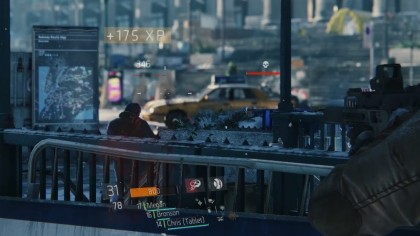
4. Keep an eye on levels
While you're acquiring XP you'll also be levelling-up your character. Each mission and district in The Division will have a recommended level, and while it might be tempting to attempt some of these early, if you're below the recommended level you're really going to struggle.
Instead, work on building up your levels and stats so that you'll be able to survive – and enjoy – the challenges that await you.

5. Use cover wisely
The Division is a cover-based shooter, much like Gears of War and Uncharted – which means recklessly running into battle firing wildly will most likely result in your death. Instead, you should take a more cautious approach to firefights, quickly running from cover to cover while outflanking your opponents.
Making clever use of the terrain will get you far in The Division, so when you're near a wall or other object that can be used for cover, tap the cover button to crouch down behind it. By pressing the aim button you can quickly pop out of cover, then by pressing fire you can take those crucial shots before disappearing back into cover.
You can also blind-fire from cover by pressing the fire button without aiming. This means you won't be in as much danger from opponents, but it also reduces your accuracy.
While it may seem sensible to keep to one spot when you're under fire, it's a good idea to keep moving between cover spots to make sure you don't get pinned down and spammed with enemy grenades. To safely move between spots you can press and hold the cover button while moving.
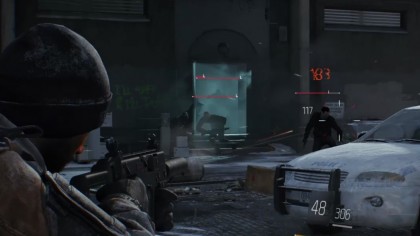
6. Understand the interface
One of the first things you'll notice when you begin playing the Division is that it has a rather busy (some would say cluttered) user interface, with icons, stats and more popping up on screen.
To get to grips with the Division you'll want to make sure you know what all this means. For example, when you shoot at an enemy you'll see numbers appear – if they're white numbers this indicates the amount of damage you're inflicting on the enemy, which will chip away at their overall health.
However, if those numbers show up as blue, it means you're hitting their armour – you'll need to deplete their armour before you begin doing real damage to enemies. If the number is orange then you've scored a critical hit that will do increased damage – and if the number is red then you've just made a headshot!
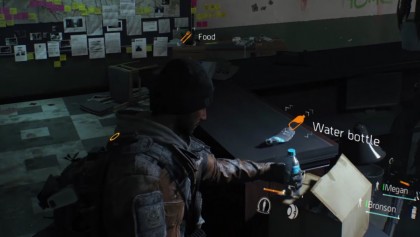
7. Use consumables to improve your chances
As you make your way through The Division's desolate world you'll have the chance to pick up various consumables, such as water and food, along with different types of bullets.
These consumables will give you different – and temporary – boosts when you use them, and they can be quickly accessed by pressing and holding right on the D-pad for the Xbox One and PS4, or by holding V on PC.
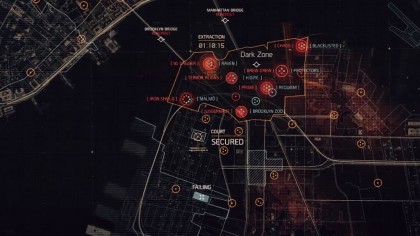
8. Only enter The Dark Zone when you're ready
Going into The Dark Zone brings a lot of rewards, including increased XP and some of the game's most powerful weapons and gear – but it also brings a lot of risk. The enemies you encounter in The Dark Zone are a lot tougher, generally starting at around level 10, so if you go rushing in before you're ready you'll find you won't survive very long at all.
When you die in The Dark Zone you'll lose a lot of progress as well, including money, keys and XP – so be careful, and make sure you level-up enough before you enter.
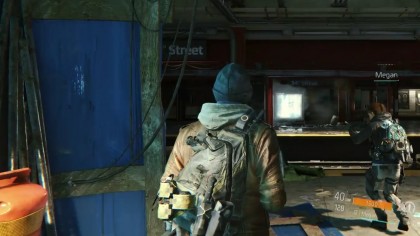
9. Play co-operatively
While most of The Division can be played solo, Ubisoft has designed the game to be played online with other people, so that's arguably the best way to play it. You can team up with friends or strangers to play through missions, and either way we recommend that you communicate with your team mates to devise strategies and work together.
Not only does this make The Division more fun to play, it also makes it easier – and there's nothing like working as part of a team, taking down bad guys in perfect synchronisation.
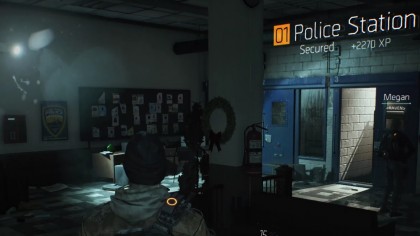
10. Unlock safe houses
As is typical with an open-world Ubisoft game, The Division has a huge map filled with icons. Perhaps the most important parts of the map – especially early on – are the various safe houses that you can unlock.
For a start, each safe house enables you to fast-travel to that location later on, which makes getting across The Division's huge map much easier. You'll also get XP and more missions for every safe house you unlock, so the sooner you unlock them the faster you'll progress.

Matt is TechRadar's Managing Editor for Core Tech, looking after computing and mobile technology. Having written for a number of publications such as PC Plus, PC Format, T3 and Linux Format, there's no aspect of technology that Matt isn't passionate about, especially computing and PC gaming. He’s personally reviewed and used most of the laptops in our best laptops guide - and since joining TechRadar in 2014, he's reviewed over 250 laptops and computing accessories personally.